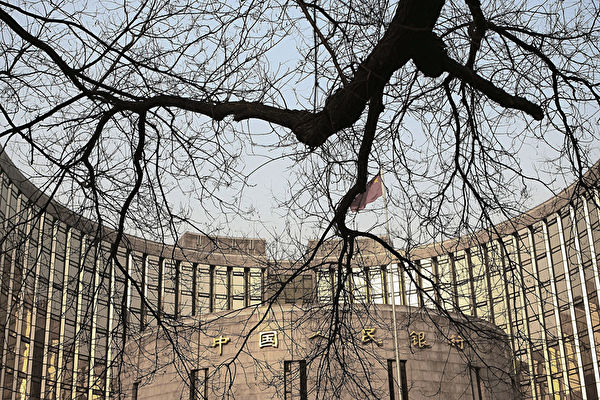Amidst the continuous downturn of the Chinese economy, rumors about salary cuts and layoffs in the banking industry have been unsettling the market recently. According to statistics, in the first half of this year, more than 40 A-share listed banks have cut over 40,000 jobs, and bank employees holding coveted positions (such as bank managers and customer managers) have started hitting the streets to distribute leaflets to attract customers.
Once seen as “earning money with minimal effort,” the Chinese banking industry is now facing the issue of overall shrinking operating income and net profits. Data from the first half of the year revealed that many banks experienced pressure on their commission income due to a decline in intermediary business, impacting their performance growth.
Recently, employees from several state-owned and joint-stock banks disclosed that banks have intensified their promotion of wealth management services, requiring all branch staff to promote wealth management and deposit products through methods like setting up booths in neighborhoods and distributing leaflets in communities.
On September 19th, a woman named Chen living in Chaoyang District, Beijing, reported that while she was on her way to the subway Line 1, someone approached her cautiously and handed her a leaflet. Just as she was about to refuse, the person whispered, “Take a look at our deposit and wealth management services.”
It has been reported that apart from employees of city commercial banks distributing promotional leaflets on the streets, numerous state-owned and joint-stock banks have heightened their “external expansion” promotional efforts.
An employee from a joint-stock bank mentioned that everyone, including bank managers, is involved in external promotions. Branch staff, including bank managers, lobby managers, business customer managers, and personal customer managers, participate in promoting available wealth management and deposit products for two hours each day.
This employee stated that leaflets are distributed on the roadside, and a stall is set up for promotion. They are required to take photos daily to provide feedback on the results of the day’s external expansion, such as the number of new credit card customers introduced and the number of added customers on WeChat.
Additionally, an employee from a branch of a state-owned bank in Hefei mentioned, “Our branch does not allow customer managers to work at the branch. Everyone goes out to expand the customer base after the morning meeting.”
According to performance reports from the first half of 2024, many listed banks have seen a decline in non-interest income, with pressure on intermediary business being common. Influenced by fluctuations in transactions related to public funds and other product promotions, some banks experienced significant decreases in commission and fee income compared to the previous year.
This year has seen repeated rumors about salary cuts for bank employees, stirring market concerns. With the disclosure of semi-annual reports of A-share listed banks, the total compensation for 42 bank employees has surfaced.
According to a recent report by the Beijing Business Daily, in the first half of this year, the number of employees decreased by 42,600 across 41 A-share listed banks from the beginning of the year, with over 70% of banks reducing their workforce.
State-owned banks led the way in job cuts, with a total reduction of over 23,700 employees. Industrial and Commercial Bank of China saw the most significant decrease in employees, around 10,600. Agricultural Bank of China, China Construction Bank, Postal Savings Bank of China reduced their workforce by 4,980, 4,790, 4,224 respectively, and China Merchants Bank cut 867 staff.
Most joint-stock banks also experienced varying degrees of job cuts; China CITIC Bank, Ping An Bank, Huaxia Bank, China Everbright Bank, and China Merchants Bank reduced their workforce by more than a thousand, while Minsheng Bank and China Guangfa Bank cut over a hundred staff members. Regional city commercial banks, including Ningbo Bank, Changsha Bank, Changshu Rural Commercial Bank, and Jiangyin Rural Commercial Bank, also reported a corresponding decrease in employee numbers.
Furthermore, with overall bank revenues under pressure in the first half of the year, employee compensation also shrank accordingly, with the total compensation for bank employees at 42 banks decreasing by nearly 700 million yuan. The average monthly salary per employee at the 41 A-share listed banks shrank by over 70%.
Gao Renshan, Director of the Regional Development Research Center at the Taiwan Institute of Economic Research, recently stated to Epoch Times that the current economic situation in China is extremely grim, with clear signs of recession. It appears that China is entering a deflationary spiral, where people are reluctant to spend money, leading to stagnation in fund circulation.
Gao Renshan mentioned that for the Chinese government to revive the economy, it needs to promote GDP growth, curb deflation, and boost consumption, all of which rely on the financial industry. However, the current trend of the Chinese government intensifying regulatory efforts while aiming to achieve these goals is paradoxical and puzzling.

